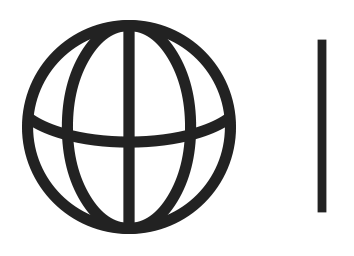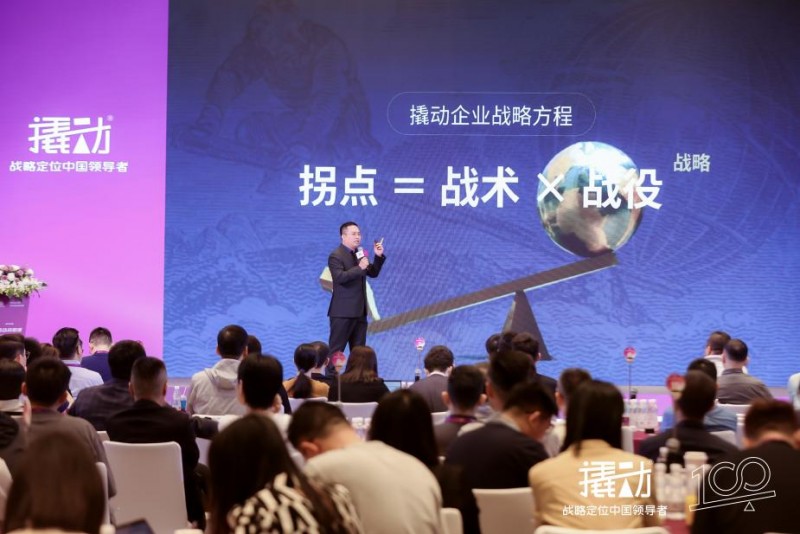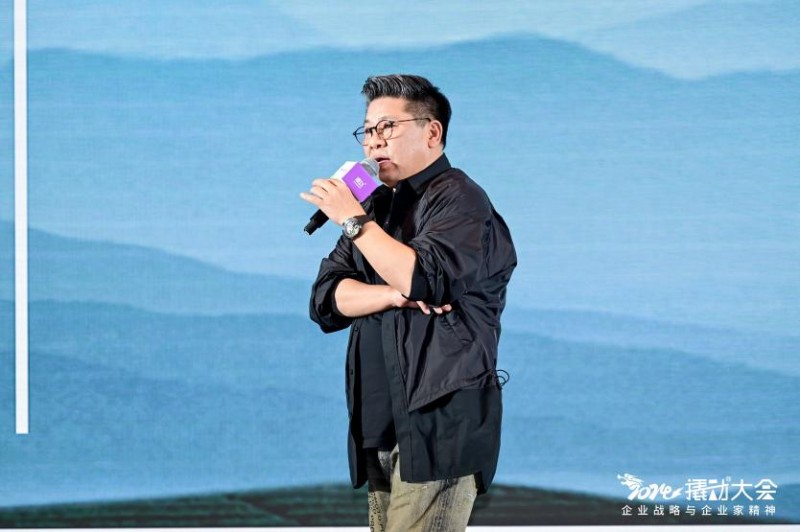
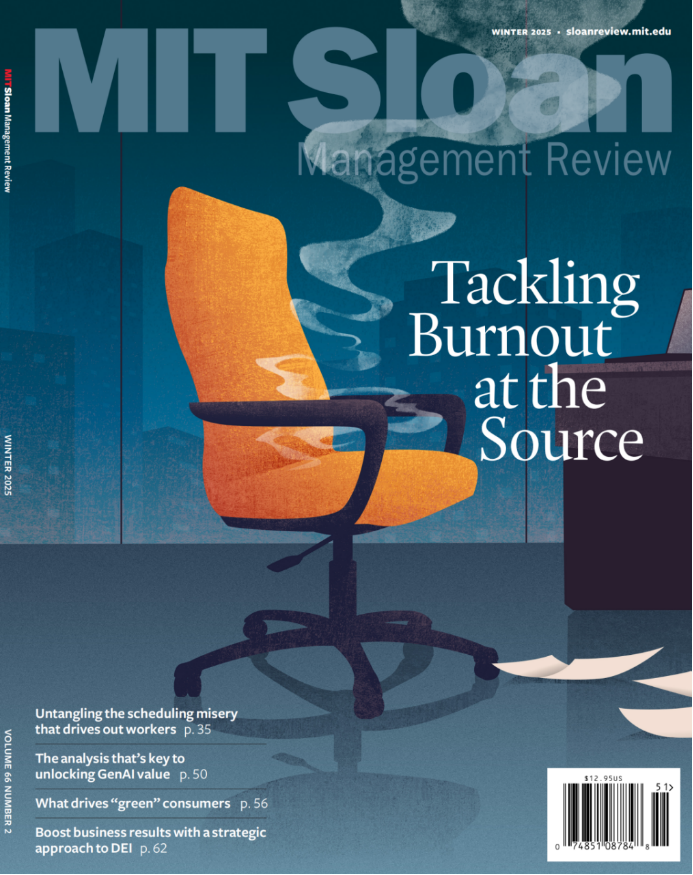
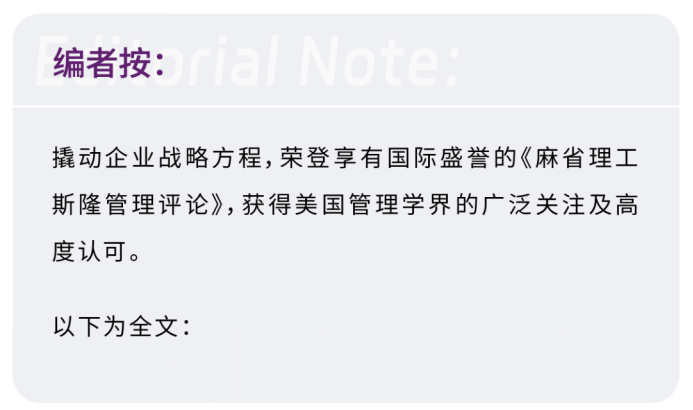
authors |Yao Rongjun, is the president of The Leverage Consulting. He is the academic fellow of Competition Strategy Teaching and Research Work- shop of China Management Case Sharing Center and the academic fellow of The International Council of Management Consulting Institutes.Liu Xuewei, is the senior research consultant of Business Review and former Deputy Editor-in-Chief. She is the translator of the Chinese version of Managing for Results (Peter Drucker) and the author of Big Competition (China Machine Press, 2019).
In the past few years, the world has become a much more turbulent place as a result of the spread of pandemics, the outbreak of wars, geopolitical upheavals, collapse of the traditional order and the rise of AI. Such unprecedented and momentous changes are having a profound impact on the business world, affecting both the internal and external environment of business operation and strategy management.
In the past when the business environment was relatively stable, the basic hypothesis of strategic management was that industrial boundaries and economic conditions would remain stable for a period of time. This enables decision makers to formulate strategies that could ensure the steady growth of their companies. Today, however, the complexities and uncertainties of both the internal and external environment have risen dramatically,causing greater variations in the strategy management hypotheses and complicating the decision-making process.
Based on 14 years of consulting experience with dozens of Chinese enterprises, The Leverage Consulting has identified two major challenges that companies face in strategy management within the context of the new economic era.
Firstly, many Chinese enterprises are still operating under traditional management models, with the competition among companies being highly homogenized, causing low profits and sluggish growth. Upon analyzing the underlying causes, we found that these Chinese companies are similar to Japanese enterprises several years ago—they have yet to break free of the paradigm mentioned by Michael Porter, where operational efficiency is substituted for strategy.
Although these companies strive to make breakthroughs in strategy management, they inevitably end up focusing their resources on areas like products, technology, distribution channel building, and using platforms like the internet to capture traffic, making these their business priorities. What they fail to realize is that whatever they can do, their competitors can also do.
Therefore, in this new strategic environment, companies must address the issue raised by Michael Porter— distinguishing between strategy and operations. By innovating their business strategies, they can break free from the curse of homogenization and open up new avenues for growth.
Secondly, business strategy management theories must be put into practice through standardized, indigenized, actionable and replicable tools if they are to achieve their strategy goals. This is something Chinese enterprises have long lacked.
Strategy management originated from Positioning Theory. After its introduction in China, it has evolved into the mainstream strategy management model for Chinese companies through development and innovation by numerous local consulting firms. However, merely advancing and innovating at the theoretical level is no longer sufficient to meet the needs of China's relatively young enterprises in this turbulent and uncertain environment.
Based on years of in-depth observation and analysis of client companies, The Leverage Consulting describes the common strategic management problems faced by Chinese enterprises as: lack of tactics at the frontline, lack of campaigns in the market, and lack of strategy at the headquarters.
In response, The Leverage Consulting has developed a new model called "Strategic Positioning + Campaigns," which we named the "Leverage Business Strategy Formula". This formula has been applied by 18 leading companies across various industries, helping them break through competitive deadlocks, create new inflection points for growth, and achieve sustainable growth.

The goal of the Leverage Business Strategy Formula is to collaboratively create growth inflection points that enable exponential growth for companies. This inflection point can be understood as achieving business increments, which include but are not limited to distribution channel expansion, revenue growth, expansion of scale, brand enhancement, and increased market competitiveness.
The goal of the Leverage Business Strategy Formula is to collaboratively create growth inflection points that enable exponential growth for companies. This inflection point can be understood as achieving business increments, which include but are not limited to distribution channel expansion, revenue growth, expansion of scale, brand enhancement, and increased market competitiveness.
 In this Formula, the inflection point is the product of "tactics" and campaigns raised to the power of strategy. Any changes in the three factors will directly impact the inflection point.
In this Formula, the inflection point is the product of "tactics" and campaigns raised to the power of strategy. Any changes in the three factors will directly impact the inflection point.
The term "strategy" originated in the military domain and was later introduced into the business world by Peter Drucker in his book Managing for Results. Over time, it would become widely adopted and used by the corporate sector, eventually becoming a buzzword in the modern business world.
In the Leverage Business Strategy Formula, we define "strategy" as a deliberate, planned, and organized course of action within a company with the aim of guiding the organization from its current state to its desired future position, which is the growth inflection point. It represents the operational direction all parties within a company are striving towards during a given stage.
The term "tactics" also originated as a military term, meaning the methods used to guide and conduct battles. In the Leverage Business Strategy Formula, we use it to refer to the combination of business operations within a company. It represents a series of effective actions taken by different functional departments to achieve the overall strategy, such as product optimization, marketing investment, and public relations efforts.
The term "campaign" is one of the oldest words in the history of warfare. It originally referred to a series of battles fought at a specific time and place to achieve military victory. A campaign is a segment of a war, serving the overall war strategy while being constrained by it, and it can influence, or even change, the course of the war and human history. For example, in wars like World War II, the Pacific War, and the Gulf War, although each war spanned several years and included thousands of campaigns large and small, their outcomes were determined only by a few key campaigns.
In the Leverage Business Strategy Formula, a "campaign" refers to the effective systemization, amplification and replication of business tactics into business actions at scale, through which the strategic objective is achieved. This can include efforts such as competing with rivals for regional market dominance, large-scale advertising, creating viral online products, and making concerted efforts to expand terminal distribution channels.
From The Leverage Consulting’s perspective, a campaign is the process through which a company focuses and concentrates its internal resources to purposefully deliver outputs in the market to achieve commercial returns. A campaign is both a means for a company to accomplish its strategic goals and a pathway for converting "mindshare" from the positioning concept into "market share."
In our opinion, China's current business environment is at the intersection of the latter half of the "Strategy Era" and the early stages of the "Campaign Era." Through the past 20 years of development in the strategic era, both the market and companies have been thoroughly indoctrinated in strategic mindset which will continue to exist in the long term. However, many companies still face the problem of having only a strategic direction but not the means to implement their strategies.
The main reason for this problem is the lack of a "campaign mindset." What many fail to realize is that campaigns are the key to translating strategy into economic gains, thereby forming a competitive market advantage. Many well-known Chinese companies, such as AOKANG, Chagee, SEPTWOLVES, and PANTUM, have established their positions as industry leaders through campaigns.
As can be seen from the “Leverage Diagram of the Leverage Business Strategy Formula” in the sidebar, by amplifying the input force (campaigns) through leverage, a greater output force can be generated, which in turn moves the "heavy object" on the right end of the lever—the inflection point (company growth/market share). The strategic fulcrum acts as the pivot point of the lever.
According to the principle of leverage, if a company's strategic fulcrum is positioned incorrectly, the lever becomes "effort-wasting" rather than "effort-saving." This misalignment leads to wasted resources and an inability to move the market and achieve the inflection point. Thus, the impact of strategy is exponential. When positioned correctly, strategy can bring exponential growth to the company. However, if positioned incorrectly, it can lead to exponential disaster.
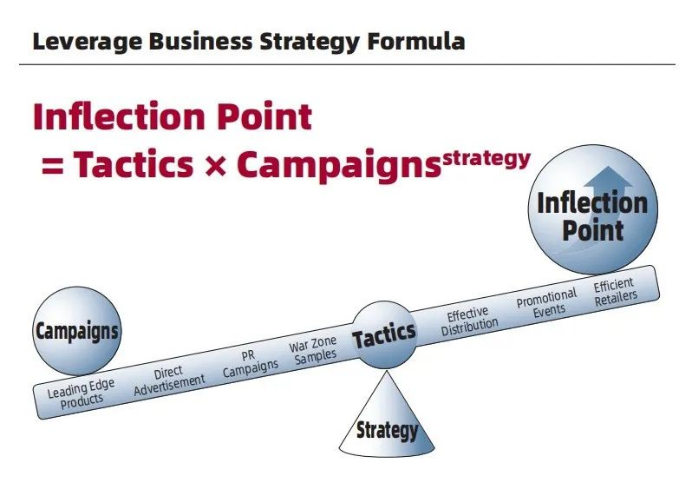

Strategy determines the correctness of internal company decisions, tactics determine the quality of strategy execution, and campaigns will determine the speed at which the company achieves inflection point growth.
| Chagee is an emerging tea beverage brand in China. Having possessed a highly effective team with strong organizational operation capabilities and skills for excelling in social media tactics, Chagee has exploded in popularity in recent years across China, especially among the youth. However, it has encountered challenges in its overseas expansion, lacking cross-industry experience and an understanding of the Western customers, such as flavor preference, drinking occasions, and acceptable price range, which are quite important in its journey of globalization.
With the help of the Business Strategy Formula, Chagee has gotten an external perspective based on customer and competitive insights, a systematic approach grounded in the strategy formula, cross-industry experience from practice of other companies, and innovative thinking with a global outlook. All of these enabled Chagee to align its current business with its vision, coordinate the domestic and international market, match internal organizational capabilities with external customer demands, and effectively convert resource investments into market results.
Eventually, Chagee established a strategic vision to model itself after Starbucks, build the recognition of “Modern Oriental Tea” among the global youth as encapsulated in its slogans “Chagee Together” and “Chagee Meet Tea & Friends." The company successfully executed two significant campaigns: the "Low-Sugar Tea Health Campaign," which broke industry operating norms, and the "For the Game, For Getting Together" Olympic campaign, which raised the brand's global potential.
After a period of strategic guidance, Chagee was able to achieve exponential growth. In January 2023, the brand had just over 1,000 stores in China. By December 2023, that number had grown to over 3,000. By mid- 2024, Chagee had expanded to more than 5,200 stores domestically and launched over 100 overseas outlets, taking its first steps towards the globalization of "Modern Oriental Tea."
| SEPTWOLVES is a long-established domestic apparel brand. For a clothing company, the label "long-established" can be a double-edged sword. In the minds of consumers, it can symbolize "classic," but it can also mean "passé." Unfortunately, SEPTWOLVES had been lumped in the latter category. The challenge for SEPTWOLVES was to make its brand rejoin the ranks of mainstream men’s fashion brands in China.
Using the Business Strategy Formula, a new strategy was developed that focused on distinguishing SEPTWOLVES through its "jacket" product, positioning it to stand out from other Chinese men’s wear brands. Tactically, this involved adjusting product structure, distribution channel layout, market trends, and organizational alignment around the "jacket." To update the brand perception with "New Jackets, New SEPTWOLVES," several campaigns were planned and launched, such as the "Hunan Benchmark Campaign," the "Milan Fashion Show Campaign," and the "SEPTWOLVES Aircraft Carrier Show Campaign." They also innovatively positioned SEPTWOLVES’ jackets as offering "comfort and formality" for business travellers, which garnered widespread attention. Today, SEPTWOLVES jackets rank first in comprehensive market share for similar products in the Chinese market.
| PANTUM is a printer manufacturer in China. Despite its steady growth, its recognition remains low because it was more focused on the B2B market. However, after conducting extensive user surveys and interviews with distributors, PANTUM discovered that its technological innovation and industry- leading advantages were not strongly recognized by C2C consumers, meaning the company has tremendous untapped opportunities and under-utilized competitive advantages. PANTUM had little experience in building a consumer-facing brand, having focused primarily on technological innovation, product development, and distribution channel expansion. While PANTUM was known within channels as a high-value printer brand, general consumers were largely unfamiliar with the name.
To maintain PANTUM's brand recognition in the B2B sphere while building its consumer market presence, the company establish its strategic fulcrum as "China’s Leading Printer Brand." Three campaigns were launched: the "Technological Breakthrough PR Campaign," the "Benchmark Market Overtaking Campaign," and the "JD.com Top Ranked Seller Campaign." These efforts aimed
to connect PANTUM’s past success with its future potential, utilizing its B2B recognition to influence B2C perceptions. In 2023, PANTUM printers achieved their seventh consecutive year of leading global sales growth, thus achieving the strategic goals of the phase.
| AOKANG, a Chinese shoe manufacturer has also benefitted from the Business Strategy Formula. Having been in the business of men’s leather shoes for over 35 years, AOKANG enjoys universal brand recognition in China. However, it struggled to find
new growth opportunities amidst homogenized competition and the trend toward casualization in business attire. AOKANG’s database possesses 3 million foot models, representing various consumer needs—whether for style, fashion, durability, softness, fit, breathability, or comfort. Which is the most important for customers? The right answer, of course, came from the frontline.
It was found that several of AOKANG’s stores were performing exceptionally well among its thousands of outlets nationwide. After on-site visits and in-depth interviews with store staff and customers, an important fact has been noticed that customers frequently mentioned the word "comfort," which seemed to summarize key value points and pain points related to men’s leather shoes. "Comfort" turned out to be the way consumers expressed their needs.
Based on this insight, AOKANG elevated "comfort" into a strategy, integrating it into all aspects of AOKANG’s business tactics. This included enhancing comfort in product development, emphasizing comfort in sales pitch, applying for patents related to comfort, and making comfort more visually prominent in marketing materials. All efforts were aimed at one target: "comfort." As this "comfort strategy" progressed, AOKANG developed an innovative product that best embodied the comfort of leather shoes—leather sneakers, offering enhanced comfort and versatility. In 2023, AOKANG’s leather sneakers once again captured the attention and wallets of mainstream urban consumers, allowing it to maintain a leading position in sales.
The Business Strategy Formula provides entrepreneurs with a clear basis for making correct strategic decisions in the simplest terms. It allows them to clearly differentiate the concepts of tactics, strategy and campaign, effectively mobilize various departments within the company, and achieve their strategic aims. The formularized and visualized presentation enables companies to more efficiently balance the relationships between internal operations and strategy, ensuring that strategic objectives are implemented more quickly and comprehensively, as well as leveraging minimal resource investment to achieve maximum market results.
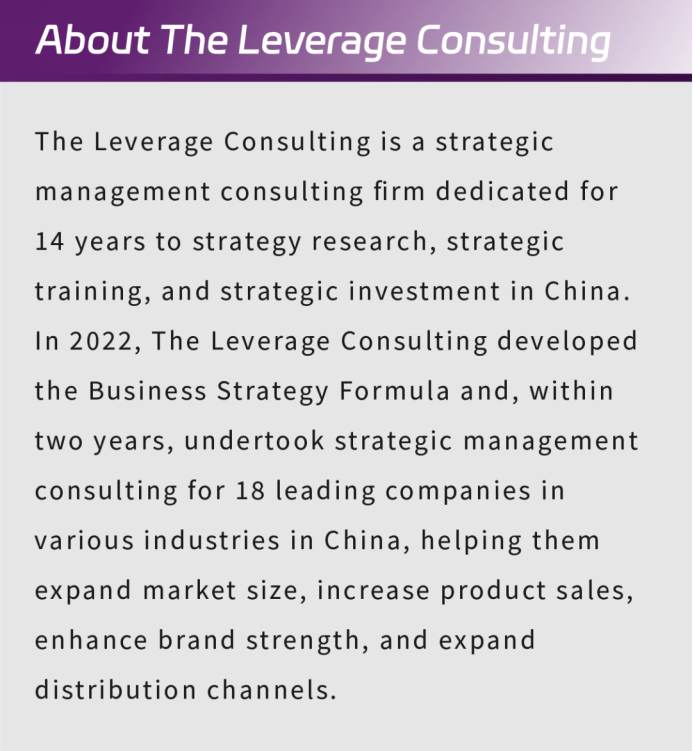
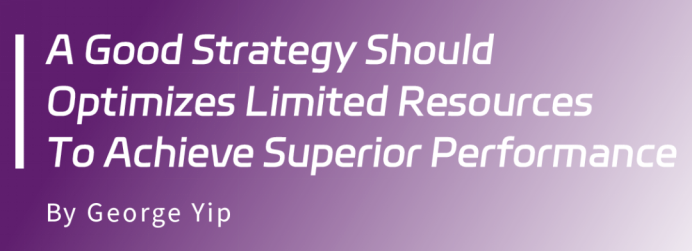
People are often confused about what is strategy. In particular, they get con- fused between strategic objectives and the business model. I now see strategy as comprising three parts. Strategic objectives are important goals, such as to diversify or double market share; strategic moves, such as campaigns, which are about how to achieve these objectives, and are dynamic and adapt over time; and the business model, which is how the business operates on an ongoing basis.
The Business Strategy Formula is good because it pushes companies to think about how to focus on strategic differentiation rather than tactical differentiation. Particularly in China, companies excel in operations and implementation, often placing less emphasis on strategy. By emphasizing leverage points, the Formula helps companies understand how to maximize their resources effectively. A good strategy should optimize limited resources to achieve superior performance.
What is tactical differentiation? For instance, a new luxury hotel chain in China tailored its design specifically for the Chinese market by building larger reception areas. Why? In China, VIPs are often government officials who travel with large entourages, requiring spacious reception areas to accommodate their check-in needs. This is an example of tactical differentiation, designed to meet specific local demands. Another example is BMW and Mercedes, which offer extended wheelbases exclusively in China, significantly improving rear seating space, while increasing costs and reducing driving performance. Combined with panoramic sunroofs, these adjustments meet the needs of Chinese passengers who prefer a more expansive view.
Chagee’s collaboration with the Olympics is also a tactical move, rather than a full campaign. It’s one of many initiatives they could try—some may succeed, while others may not. Olympic sponsorships, for instance, are costly and may or may not pay off. Chagee seeks to differentiate itself both in markets like China and internation- ally, though not in a radically distinct way. However, differentiation without a clear purpose can lead to missteps. The ongoing challenge is balancing uniqueness with alignment to industry norms. True strategic decisions, like Starbucks’ adaptation to the European market, require a deeper level of commitment and transformation beyond these tactical adjustments.
Furthermore, strategy should be viewed as a cascade rather than a single level. A CEO’s tactics become the strategy for the next level down. At each level, tactics flow downward, transforming into strategy for the next layer, like water cascading through an organization.






